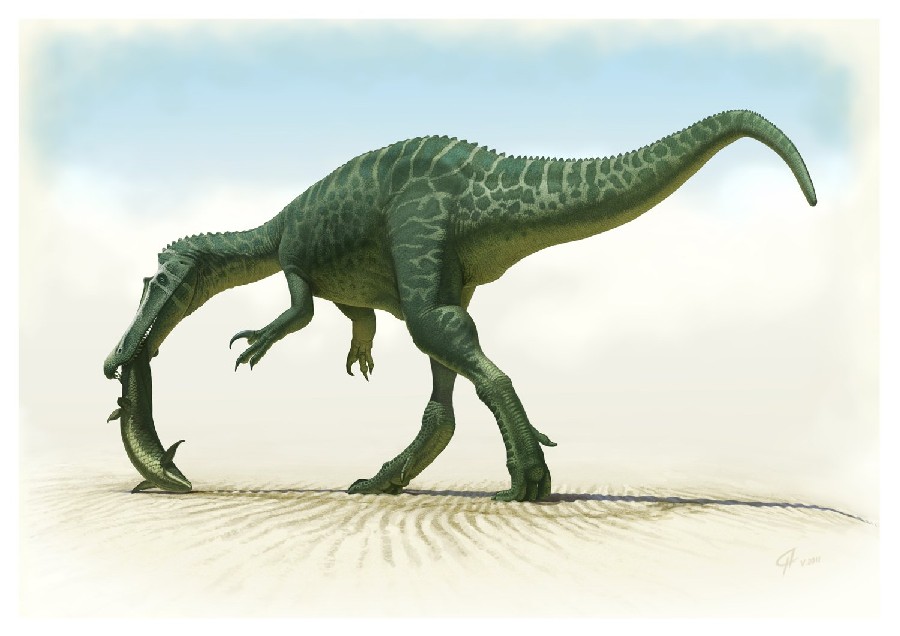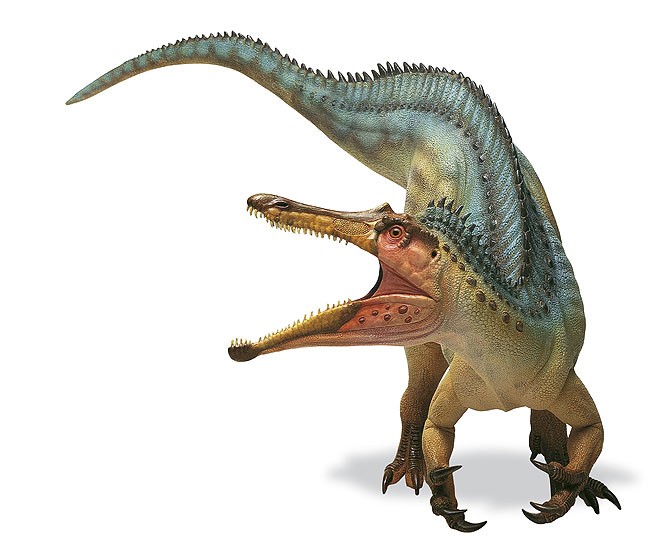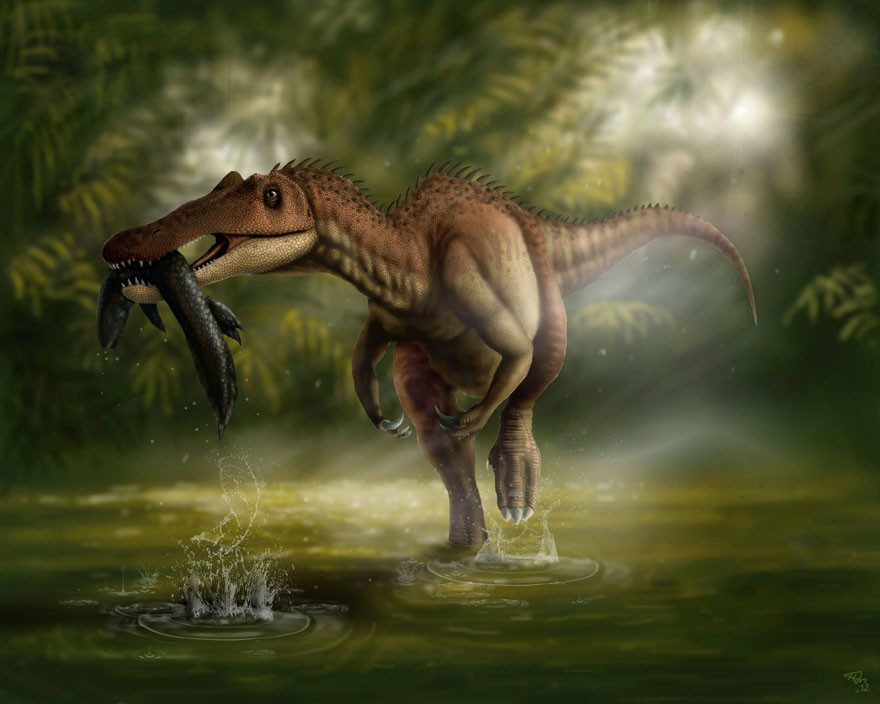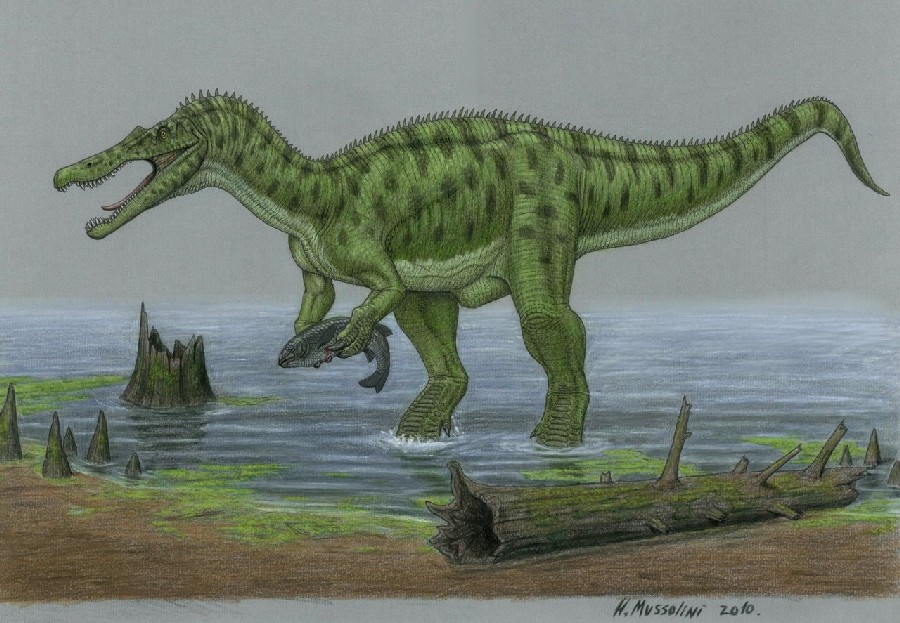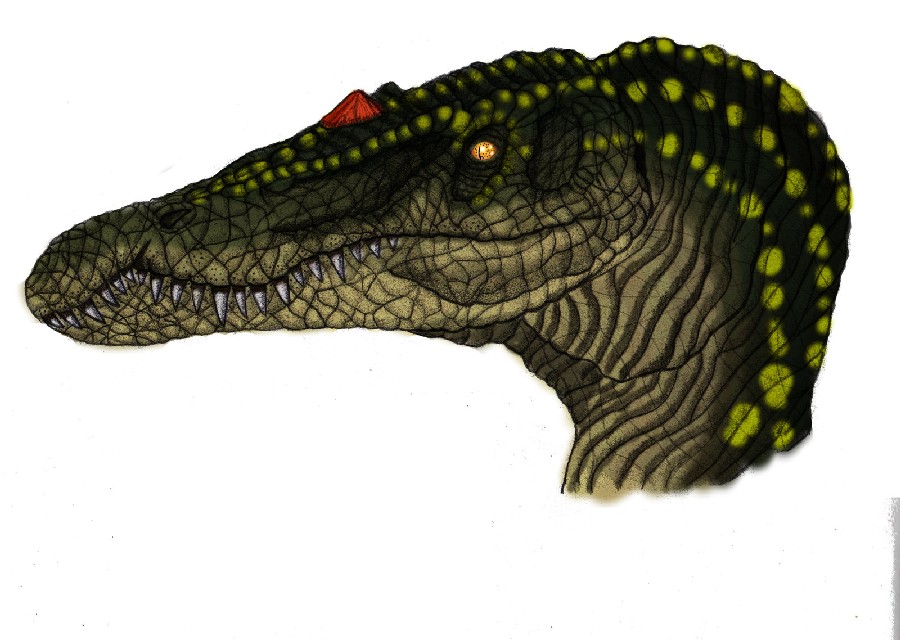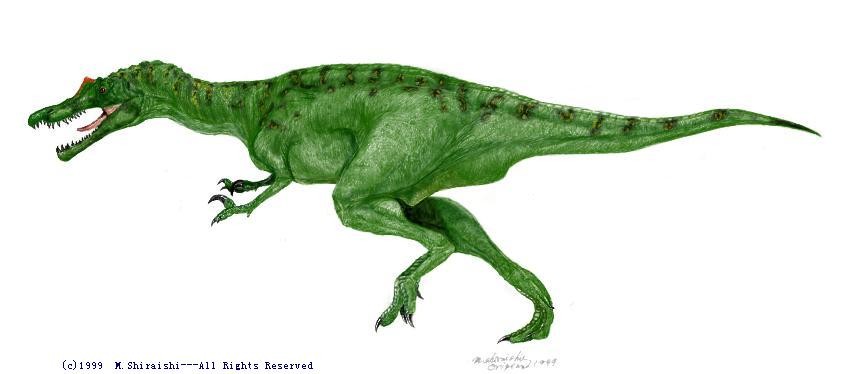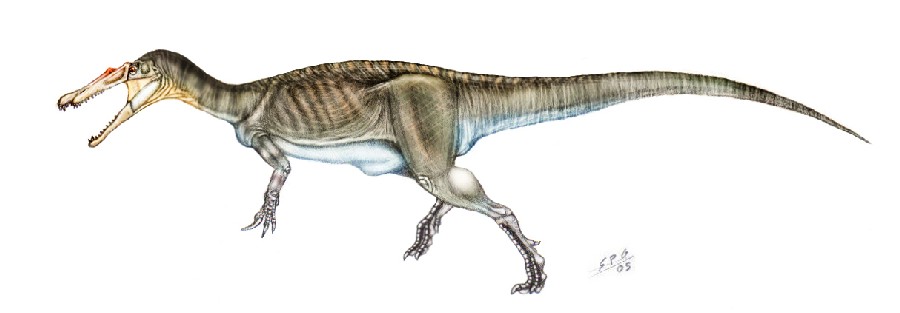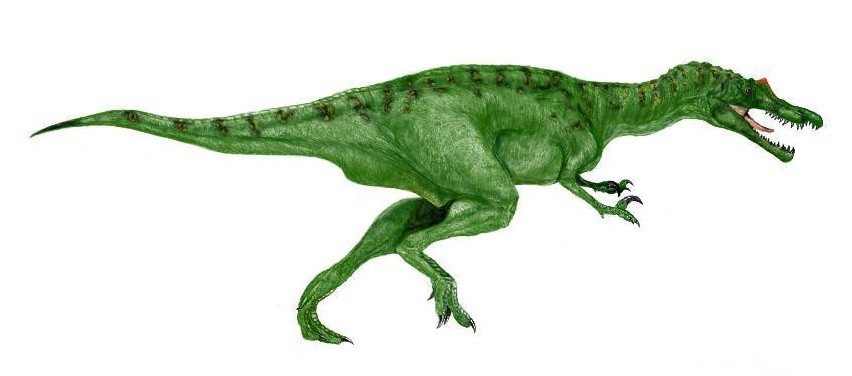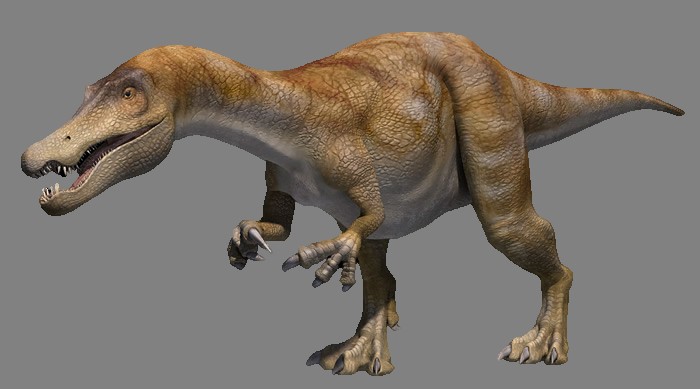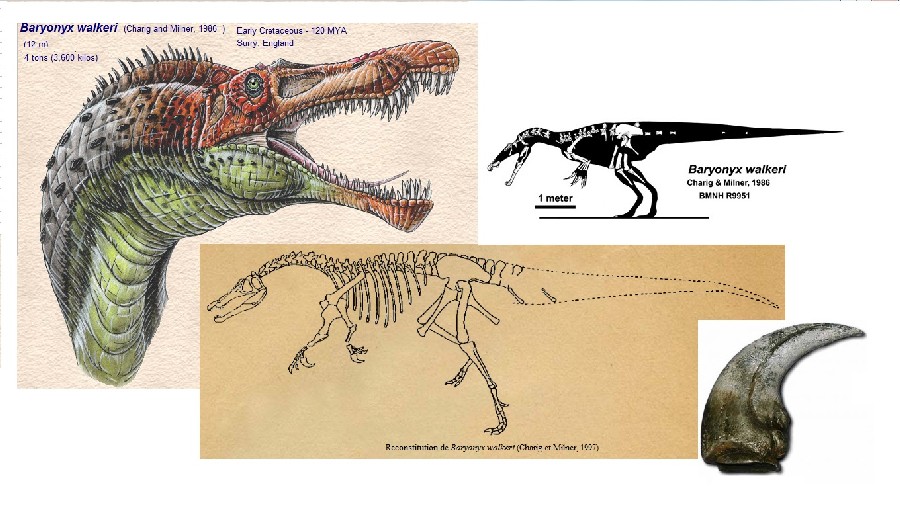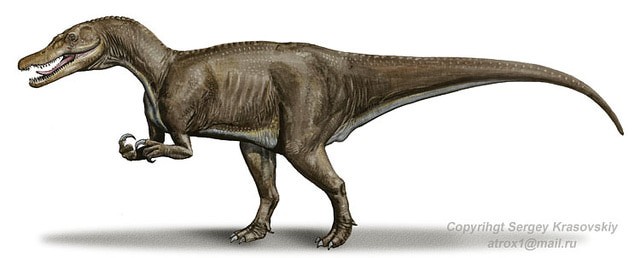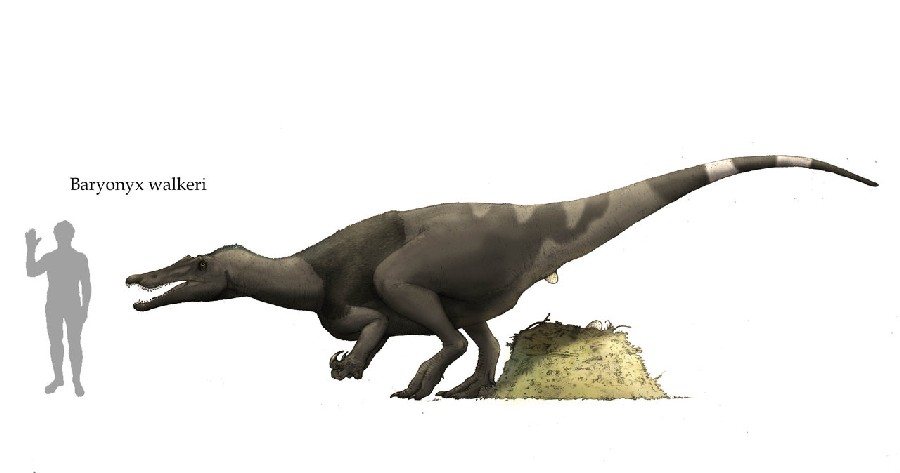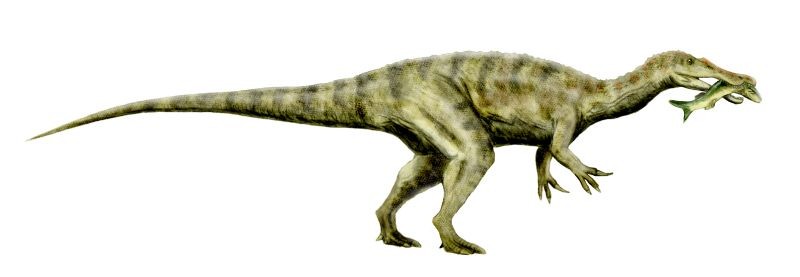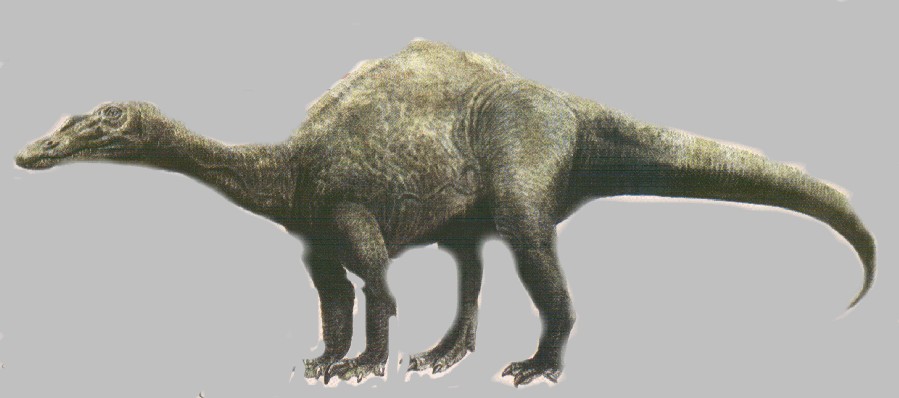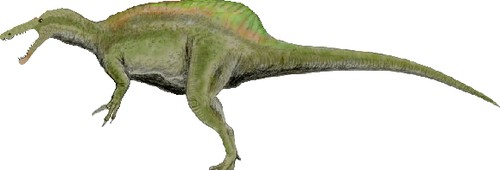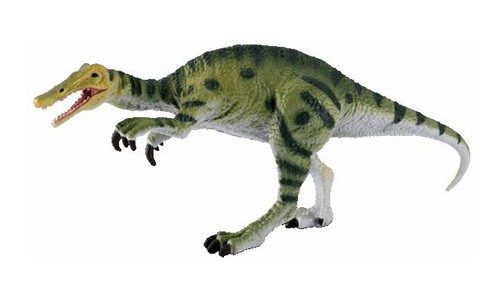База данных динозавров:
Общее количество образцов: 1365| name | Baryonyx (Барионикс) |
| period | Cretaceous (Меловой период) |
| period_mya | 66 |
| date_from | Berriasian Age (Берриасский ярус) |
| date_to | 113 million years ago |
| date_from2 | 145 |
| date_to2 | 113 |
| lived_in | a clay (глина) |
| was_a | carnivore (хищники) |
| reproduced_by | laying eggs (откладывание яиц) |
| url | https://dinosaurpictures.org/Baryonyx-pictures |
| description | Baryonyx was a distinctive-looking theropod of the early Cretaceous, found primarily in what is now northern Europe. Its name translates from the latin as “heavy claw”, and it indeed had a large, heavy claw at the end of its forelimbs. Its appearance is also marked by a long, balancing tail and a relatively small skull for a theropod, which tapers into a very narrow jaw.In artwork, Baryonyx is often depicted making use of its outsized claws to catch and devour fish. It can be recognized by its crocodilian head. |
| articles | N. H. Platt and C. A. Meyer. 1991. Dinosaur footprints from the Lower Cretaceous of northern Spain: their sedimentological and palaeoecological context. Palaeogeography, Palaeoclimatology, Palaeoecology 86:321-333 F. Torcida and C. Fuentes. 1997. Dientes de dinosaurios terópodos (cf. Baryonyx) en el Weald de Burgos (España) [Teeth of theropod dinosaurs (cf. Baryonyx) in the Weald of Burgos (Spain)]. Stvdia Geologica Salmanticensia 33:59-65 P. Austen and D. Brockhurst. 2010. Vertebrate fauna from Ashdown Brickworks, Bexhill, East Sussex. Wealden News (8):13-23 A. J. Charig and A. C. Milner. 1997. Baryonyx walkeri, a fish-eating dinosaur from the Wealden of Surrey. Bulletin of the Natural History Museum, Geology Series 53(1):11-70 W. H. E. Rivett. 1956. On some reptilian bones from the Weald Clay of Surrey. Proceedings of the Geologists' Association 67(1540):110-111 J. I. Ruiz-Omeñaca and J. I. Canudo. 2003. Dinosaurios (Saurischia, Ornithischia) en el Barremiense (Cretácico Inferior) de la península Ibérica [Dinosaurs (Saurischia, Ornithischia) in the Barremian (Lower Cretaceous) of the Iberian peninsula]. In F. Pérez Lorente (ed.), Dinosaurios y Otros Reptiles Mesozóicos de España F. Torcida Fernández-Baldor. 1996. Registro de dinosaurios en el sureste de la provincia de Burgos [Register of dinosaurs in the southeast of Burgos province]. Zubía 14:89-104 J. I. Canudo and J. I. Ruiz-Omeñaca. 2003. Los restos directos de dinosaurios teropódos (excluyendo Aves) en España [Direct remains of theropod dinosaurs (excluding Aves) in Spain]. Ciencias de la Tierra 26:347-373 |
| trophic_level | carnivore (хищники) |
| habitat | clay (глина) |
| motility | actively mobile (подвижный) |
| points | 51.1333 -0.35, 51.1333 0.43333, 50.85 0.48333, 42.0155 -3.2466, 42.151 -3.1735, 41.9345 -3.24216, 42.302 -3.63764, 50.8594 0.44255, 42.146 -2.28105, |
